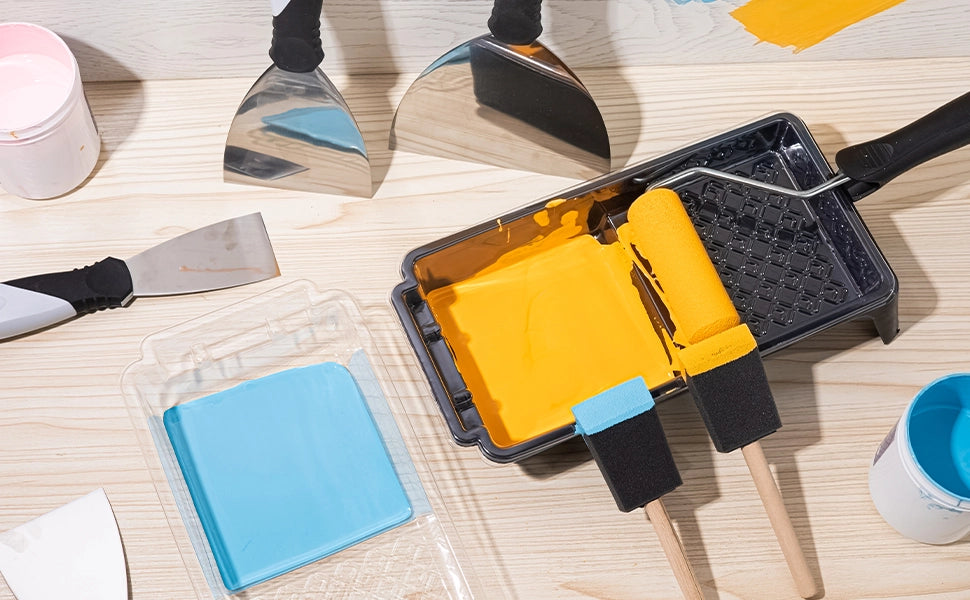You wouldn’t eat soup with a fork! The right tool makes the work easier. DIYers, if you want to level up your brushes and rollers knowledge, the tips below will help. Keep them in mind the next time you’re at the hardware store choosing painting tools.
In General: Check the Material

Picking up just any brush or roller that catches your eye at the home depot is not the way to do it. For those new to painting, know that aside from the size of your brush or roller, it’s also important to check what it’s made of and if it’s compatible with the type of paint you’re using.
Brushes with synthetic bristles, which are commonly made of nylon or plastic, are best for applying water-based latex paints. Brushes with natural bristles, made of animal hair, are best for oil- and solvent-based paints. Why does it matter? A natural-bristle brush will soak up water-based paint. This will make the bristles go limp and be very difficult to use.
For rollers, those with foam naps are best for water-based paints and cotton naps for solvent-based paints. Having said this, you will also be able to find multipurpose rollers.
For Rollers: Know What “Nap” Is

The fuzzy tube-like end of the roller that’s used to apply the paint is called the roller cover. And on the roller cover is the nap—think of it as the counterpart of the bristles on a brush. Nap lengths differ so some are longer (which makes the roller cover thicker) and some are shorter (which makes the roller cover thinner).
So, how do you know if you should go for a longer or shorter nap? Well, longer naps are commonly used on rough surfaces. This makes it easier to get paint into all those grooves. Also, if you want a textured finish on your smooth surface, you can use this as well to achieve that. On the other hand, if you have a smooth surface and want a smooth paint finish, a shorter nap is your best bet.
For Brushes: The Right Shape and Size for the Job Helps
Rollers are great if you want to paint large surfaces like room walls. But if you want to get into those tight corners or when you’re painting trimmings and moldings, you’ll likely be reaching for a brush. Which one should you get? Experienced painters will have their own preferences, of course. For newbies, however, it’s nice to have a starting guide.
When it comes to size, bigger is better for larger surfaces. And smaller ones are great if you need more control such as if you’re painting smaller areas. For the shape of your brush, your choices are typically either flat or angled. Flat brushes are for wide surfaces like walls, ceilings, and floors. Angled ones, where the end of the bristles is slanted, are perfect for making sharp lines or when cutting in.




0 comments